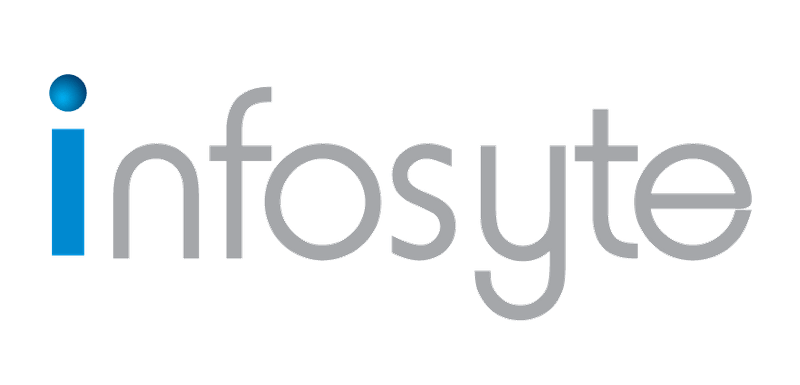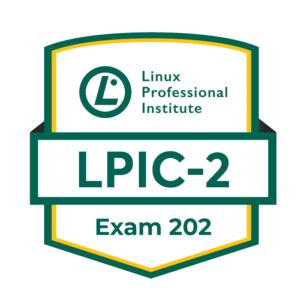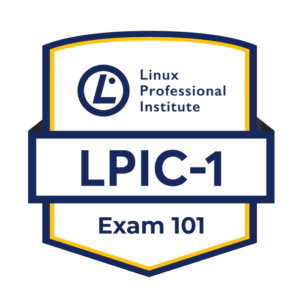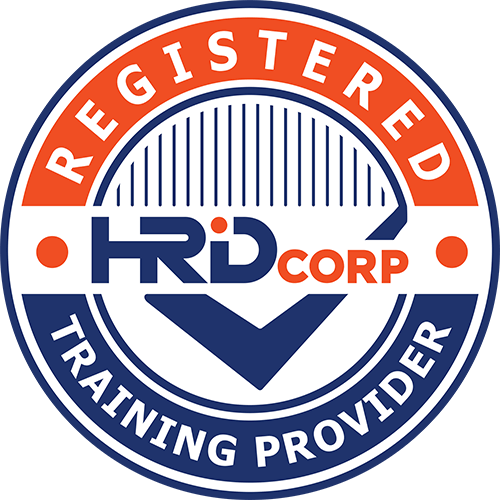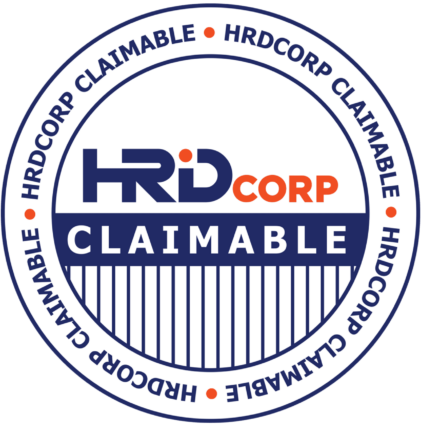Topic 207: Domain Name Server
207.1 Basic DNS server configuration
Description: Candidates should be able to configure BIND to function as a caching-only DNS server. This objective includes the ability to manage a running server and configuring logging.
Key Knowledge Areas:
- BIND 9.x configuration files, terms and utilities
- Defining the location of the BIND zone files in BIND configuration files
- Reloading modified configuration and zone files
- Awareness of dnsmasq, djbdns and PowerDNS as alternate name servers
The following is a partial list of the used files, terms and utilities:
- /etc/named.conf
- /var/named/
- /usr/sbin/rndc
- kill
- host
- dig
207.2 Create and maintain DNS zones
Description: Candidates should be able to create a zone file for a forward or reverse zone and hints for root level servers. This objective includes setting appropriate values for records, adding hosts in zones and adding zones to the DNS. A candidate should also be able to delegate zones to another DNS server.
Key Knowledge Areas:
- BIND 9 configuration files, terms and utilities
- Utilities to request information from the DNS server
- Layout, content and file location of the BIND zone files
- Various methods to add a new host in the zone files, including reverse zones
Terms and Utilities:
- /var/named/
- zone file syntax
- resource record formats
- named-checkzone
- named-compilezone
- masterfile-format
- dig
- nslookup
- host
207.3 Securing a DNS server
Description: Candidates should be able to configure a DNS server to run as a non-root user and run in a chroot jail. This objective includes secure exchange of data between DNS servers.
Key Knowledge Areas:
- BIND 9 configuration files
- Configuring BIND to run in a chroot jail
- Split configuration of BIND using the forwarders statement
- Configuring and using transaction signatures (TSIG)
- Awareness of DNSSEC and basic tools
- Awareness of DANE and related records
Terms and Utilities:
- /etc/named.conf
- /etc/passwd
- DNSSEC
- dnssec-keygen
- dnssec-signzone
Topic 208: HTTP Services
208.1 BASIC APACHE CONFIGURATION
Description: Candidates should be able to install and configure a web server. This objective includes monitoring the server’s load and performance, restricting client user access, configuring support for scripting languages as modules and setting up client user authentication. Also included is configuring server options to restrict usage of resources. Candidates should be able to configure a web server to use virtual hosts and customize file access.
Key Knowledge Areas:
- Apache 2.4 configuration files, terms and utilities
- Apache log files configuration and content
- Access restriction methods and files
- mod_perl and PHP configuration
- Client user authentication files and utilities
- Configuration of maximum requests, minimum and maximum servers and clients
- Apache 2.4 virtual host implementation (with and without dedicated IP addresses)
- Using redirect statements in Apache’s configuration files to customize file access
Terms and Utilities:
- access logs and error logs
- .htaccess
- httpd.conf
- mod_auth_basic, mod_authz_host and mod_access_compat
- htpasswd
- AuthUserFile, AuthGroupFile
- apachectl, apache2ctl
- httpd, apache2
208.2 Apache configuration for HTTPS
Description: Candidates should be able to configure a web server to provide HTTPS.
Key Knowledge Areas:
- SSL configuration files, tools and utilities
- Generate a server private key and CSR for a commercial CA
- Generate a self-signed Certificate
- Install the key and certificate, including intermediate CAs
- Configure Virtual Hosting using SNI
- Awareness of the issues with Virtual Hosting and use of SSL
- Security issues in SSL use, disable insecure protocols and ciphers
Terms and Utilities:
- Apache2 configuration files
- /etc/ssl/, /etc/pki/
- openssl, CA.pl
- SSLEngine, SSLCertificateKeyFile, SSLCertificateFile
- SSLCACertificateFile, SSLCACertificatePath
- SSLProtocol, SSLCipherSuite, ServerTokens, ServerSignature, TraceEnable
208.3 IMPLEMENTING SQUID AS A CACHING PROXY
Description: Candidates should be able to install and configure a proxy server, including access policies, authentication and resource usage.
Key Knowledge Areas:
- Squid 3.x configuration files, terms and utilities
- Access restriction methods
- Client user authentication methods
- Layout and content of ACL in the Squid configuration files
Terms and Utilities:
- squid.conf
- acl
- http_access
208.4 Implementing Nginx as a web server and a reverse proxy
Description: Candidates should be able to install and configure a reverse proxy server, Nginx. Basic configuration of Nginx as a HTTP server is included.
Key Knowledge Areas:
- Nginx
- Reverse Proxy
- Basic Web Server
Terms and Utilities:
Topic 209: File Sharing
209.1 SAMBA Server Configuration
Description: Candidates should be able to set up a Samba server for various clients. This objective includes setting up Samba as a standalone server as well as integrating Samba as a member in an Active Directory. Furthermore, the configuration of simple CIFS and printer shares is covered. Also covered is a configuring a Linux client to use a Samba server. Troubleshooting installations is also tested.
Key Knowledge Areas:
- Samba 4 documentation
- Samba 4 configuration files
- Samba 4 tools and utilities and daemons
- Mounting CIFS shares on Linux
- Mapping Windows user names to Linux user names
- User-Level, Share-Level and AD security
Terms and Utilities:
- smbd, nmbd, winbindd
- smbcontrol, smbstatus, testparm, smbpasswd, nmblookup
- samba-tool
- net
- smbclient
- mount.cifs
- /etc/samba/
- /var/log/samba/
209.2 NFS Server Configuration
Description: Candidates should be able to export filesystems using NFS. This objective includes access restrictions, mounting an NFS filesystem on a client and securing NFS.
Key Knowledge Areas:
- NFS version 3 configuration files
- NFS tools and utilities
- Access restrictions to certain hosts and/or subnets
- Mount options on server and client
- TCP Wrappers
- Awareness of NFSv4
Terms and Utilities:
- /etc/exports
- exportfs
- showmount
- nfsstat
- /proc/mounts
- /etc/fstab
- rpcinfo
- mountd
- portmapper
Topic 210: Network Client Management
210.1 DHCP configuration
Description: Candidates should be able to configure a DHCP server. This objective includes setting default and per client options, adding static hosts and BOOTP hosts. Also included is configuring a DHCP relay agent and maintaining the DHCP server.
Key Knowledge Areas:
- DHCP configuration files, terms and utilities
- Subnet and dynamically-allocated range setup
- Awareness of DHCPv6 and IPv6 Router Advertisements
Terms and Utilities:
- dhcpd.conf
- dhcpd.leases
- DHCP Log messages in syslog or systemd journal
- arp
- dhcpd
- radvd
- radvd.conf
210.2 PAM authentication
Description: The candidate should be able to configure PAM to support authentication using various available methods. This includes basic SSSD functionality.
Key Knowledge Areas:
- PAM configuration files, terms and utilities
- passwd and shadow passwords
- Use sssd for LDAP authentication
Terms and Utilities:
- /etc/pam.d/
- pam.conf
- nsswitch.conf
- pam_unix, pam_cracklib, pam_limits, pam_listfile, pam_sss
- sssd.conf
210.3 LDAP client usage
Description: Candidates should be able to perform queries and updates to an LDAP server. Also included is importing and adding items, as well as adding and managing users.
Key Knowledge Areas:
- LDAP utilities for data management and queries
- Change user passwords
- Querying the LDAP directory
Terms and Utilities:
- ldapsearch
- ldappasswd
- ldapadd
- ldapdelete
210.4 Configuring an OpenLDAP server
Description: Candidates should be able to configure a basic OpenLDAP server including knowledge of LDIF format and essential access controls.
Key Knowledge Areas:
- OpenLDAP
- Directory based configuration
- Access Control
- Distinguished Names
- Changetype Operations
- Schemas and Whitepages
- Directories
- Object IDs, Attributes and Classes
Terms and Utilities:
- slapd
- slapd-config
- LDIF
- slapadd
- slapcat
- slapindex
- /var/lib/ldap/
- loglevel
Topic 211: E-Mail Services
211.1 Using e-mail servers
Description: Candidates should be able to manage an e-mail server, including the configuration of e-mail aliases, e-mail quotas and virtual e-mail domains. This objective includes configuring internal e-mail relays and monitoring e-mail servers.
Key Knowledge Areas:
- Configuration files for postfix
- Basic TLS configuration for postfix
- Basic knowledge of the SMTP protocol
- Awareness of sendmail and exim
Terms and Utilities:
- Configuration files and commands for postfix
- /etc/postfix/
- /var/spool/postfix/
- sendmail emulation layer commands
- /etc/aliases
- mail-related logs in /var/log/
211.2 Managing E-Mail Delivery
Description: Candidates should be able to implement client e-mail management software to filter, sort and monitor incoming user e-mail.
Key Knowledge Areas:
- Understanding of Sieve functionality, syntax and operators
- Use Sieve to filter and sort mail with respect to sender, recipient(s), headers and size
- Awareness of procmail
Terms and Utilities:
- Conditions and comparison operators
- keep, fileinto, redirect, reject, discard, stop
- Dovecot vacation extension
211.3 MANAGING MAILBOX ACCESS
Description: Candidates should be able to install and configure POP and IMAP daemons.
Key Knowledge Areas:
- Dovecot IMAP and POP3 configuration and administration
- Basic TLS configuration for Dovecot
- Awareness of Courier
Terms and Utilities:
- /etc/dovecot/
- dovecot.conf
- doveconf
- doveadm
Topic 212: System Security
212.1 Configuring a router
Description: Candidates should be able to configure a system to forward IP packet and perform network address translation (NAT, IP masquerading) and state its significance in protecting a network. This objective includes configuring port redirection, managing filter rules and averting attacks.
Key Knowledge Areas:
- iptables and ip6tables configuration files, tools and utilities
- Tools, commands and utilities to manage routing tables.
- Private address ranges (IPv4) and Unique Local Addresses as well as Link Local Addresses (IPv6)
- Port redirection and IP forwarding
- List and write filtering and rules that accept or block IP packets based on source or destination protocol, port and address
- Save and reload filtering configurations
Terms and Utilities:
- /proc/sys/net/ipv4/
- /proc/sys/net/ipv6/
- /etc/services
- iptables
- ip6tables
212.2 MANAGING FTP SERVERS
Description: Candidates should be able to configure an FTP server for anonymous downloads and uploads. This objective includes precautions to be taken if anonymous uploads are permitted and configuring user access.
Key Knowledge Areas:
- Configuration files, tools and utilities for Pure-FTPd and vsftpd
- Awareness of ProFTPd
- Understanding of passive vs. active FTP connections
Terms and Utilities:
- vsftpd.conf
- important Pure-FTPd command line options
212.3 Secure shell (SSH)
Description: Candidates should be able to configure and secure an SSH daemon. This objective includes managing keys and configuring SSH for users. Candidates should also be able to forward an application protocol over SSH and manage the SSH login.
Key Knowledge Areas:
- OpenSSH configuration files, tools and utilities
- Login restrictions for the superuser and the normal users
- Managing and using server and client keys to login with and without password
- Usage of multiple connections from multiple hosts to guard against loss of connection to remote host following configuration changes
Terms and Utilities:
- ssh
- sshd
- /etc/ssh/sshd_config
- /etc/ssh/
- Private and public key files
- PermitRootLogin, PubKeyAuthentication, AllowUsers, PasswordAuthentication, Protocol
212.4 Security tasks
Description: Candidates should be able to receive security alerts from various sources, install, configure and run intrusion detection systems and apply security patches and bugfixes.
Key Knowledge Areas:
- Tools and utilities to scan and test ports on a server
- Locations and organizations that report security alerts as Bugtraq, CERT or other sources
- Tools and utilities to implement an intrusion detection system (IDS)
- Awareness of OpenVAS and Snort
Terms and Utilities:
- telnet
- nmap
- fail2ban
- nc
- iptables
212.5 OpenVPN
Description: Candidates should be able to configure a VPN (Virtual Private Network) and create secure point-to-point or site-to-site connections.
Key Knowledge Areas:
Terms and Utilities:
